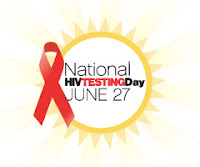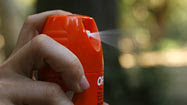"Fukushima is the biggest industrial catastrophe in the history of mankind," Arnold Gundersen, a former nuclear industry senior vice president, told Al Jazeera. Japan's 9.0 earthquake on March 11 caused a massive tsunami that crippled the cooling systems at the Tokyo Electric Power Company's (TEPCO) nuclear plant in Fukushima, Japan. It also led to hydrogen explosions and reactor meltdowns that forced evacuations of those living within a 20km radius of the plant. Gundersen, a licensed reactor operator with 39 years of nuclear power engineering experience, managing and coordinating projects at 70 nuclear power plants around the US, says the Fukushima nuclear plant likely has more exposed reactor cores than commonly believed. "Fukushima has three nuclear reactors exposed and four fuel cores exposed," he said, "You probably have the equivalent of 20 nuclear reactor cores because of the fuel cores, and they are all in desperate need of being cooled, and there is no means to cool them effectively." TEPCO has been spraying water on several of the reactors and fuel cores, but this has led to even greater problems, such as radiation being emitted into the air in steam and evaporated sea water - as well as generating hundreds of thousands of tons of highly radioactive sea water that has to be disposed of. "The problem is how to keep it cool," says Gundersen. "They are pouring in water and the question is what are they going to do with the waste that comes out of that system, because it is going to contain plutonium and uranium. Where do you put the water?" Even though the plant is now shut down, fission products such as uranium continue to generate heat, and therefore require cooling. "The fuels are now a molten blob at the bottom of the reactor," Gundersen added. "TEPCO announced they had a melt through. A melt down is when the fuel collapses to the bottom of the reactor, and a melt through means it has melted through some layers. That blob is incredibly radioactive, and now you have water on top of it. The water picks up enormous amounts of radiation, so you add more water and you are generating hundreds of thousands of tons of highly radioactive water." Independent scientists have been monitoring the locations of radioactive "hot spots" around Japan, and their findings are disconcerting. "We have 20 nuclear cores exposed, the fuel pools have several cores each, that is 20 times the potential to be released than Chernobyl," said Gundersen. "The data I'm seeing shows that we are finding hot spots further away than we had from Chernobyl, and the amount of radiation in many of them was the amount that caused areas to be declared no-man's-land for Chernobyl. We are seeing square kilometres being found 60 to 70 kilometres away from the reactor. You can't clean all this up. We still have radioactive wild boar in Germany, 30 years after Chernobyl." Radiation monitors for children Japan's Nuclear Emergency Response Headquarters finally admitted earlier this month that reactors 1, 2, and 3 at the Fukushima plant experienced full meltdowns. TEPCO announced that the accident probably released more radioactive material into the environment than Chernobyl, making it the worst nuclear accident on record. Meanwhile, a nuclear waste advisor to the Japanese government reported that about 966 square kilometres near the power station - an area roughly 17 times the size of Manhattan - is now likely uninhabitable. In the US, physician Janette Sherman MD and epidemiologist Joseph Mangano published an essay shedding light on a 35 per cent spike in infant mortality in northwest cities that occurred after the Fukushima meltdown, and may well be the result of fallout from the stricken nuclear plant. The eight cities included in the report are San Jose, Berkeley, San Francisco, Sacramento, Santa Cruz, Portland, Seattle, and Boise, and the time frame of the report included the ten weeks immediately following the disaster. "There is and should be concern about younger people being exposed, and the Japanese government will be giving out radiation monitors to children," Dr MV Ramana, a physicist with the Programme on Science and Global Security at Princeton University who specialises in issues of nuclear safety, told Al Jazeera. Dr Ramana explained that he believes the primary radiation threat continues to be mostly for residents living within 50km of the plant, but added: "There are going to be areas outside of the Japanese government's 20km mandatory evacuation zone where radiation is higher. So that could mean evacuation zones in those areas as well." Gundersen points out that far more radiation has been released than has been reported. "They recalculated the amount of radiation released, but the news is really not talking about this," he said. "The new calculations show that within the first week of the accident, they released 2.3 times as much radiation as they thought they released in the first 80 days." According to Gundersen, the exposed reactors and fuel cores are continuing to release microns of caesium, strontium, and plutonium isotopes. These are referred to as "hot particles". "We are discovering hot particles everywhere in Japan, even in Tokyo," he said. "Scientists are finding these everywhere. Over the last 90 days these hot particles have continued to fall and are being deposited in high concentrations. A lot of people are picking these up in car engine air filters." Radioactive air filters from cars in Fukushima prefecture and Tokyo are now common, and Gundersen says his sources are finding radioactive air filters in the greater Seattle area of the US as well. The hot particles on them can eventually lead to cancer. "These get stuck in your lungs or GI tract, and they are a constant irritant," he explained, "One cigarette doesn't get you, but over time they do. These [hot particles] can cause cancer, but you can't measure them with a Geiger counter. Clearly people in Fukushima prefecture have breathed in a large amount of these particles. Clearly the upper West Coast of the US has people being affected. That area got hit pretty heavy in April." Blame the US? In reaction to the Fukushima catastrophe, Germany is phasing out all of its nuclear reactors over the next decade. In a referendum vote this Monday, 95 per cent of Italians voted in favour of blocking a nuclear power revival in their country. A recent newspaper poll in Japan shows nearly three-quarters of respondents favour a phase-out of nuclear power in Japan. Why have alarms not been sounded about radiation exposure in the US? Nuclear operator Exelon Corporation has been among Barack Obama's biggest campaign donors, and is one of the largest employers in Illinois where Obama was senator. Exelon has donated more than $269,000 to his political campaigns, thus far. Obama also appointed Exelon CEO John Rowe to his Blue Ribbon Commission on America's Nuclear Future. Dr Shoji Sawada is a theoretical particle physicist and Professor Emeritus at Nagoya University in Japan.
He is concerned about the types of nuclear plants in his country, and the fact that most of them are of US design. "Most of the reactors in Japan were designed by US companies who did not care for the effects of earthquakes," Dr Sawada told Al Jazeera. "I think this problem applies to all nuclear power stations across Japan." Using nuclear power to produce electricity in Japan is a product of the nuclear policy of the US, something Dr Sawada feels is also a large component of the problem. "Most of the Japanese scientists at that time, the mid-1950s, considered that the technology of nuclear energy was under development or not established enough, and that it was too early to be put to practical use," he explained. "The Japan Scientists Council recommended the Japanese government not use this technology yet, but the government accepted to use enriched uranium to fuel nuclear power stations, and was thus subjected to US government policy." As a 13-year-old, Dr Sawada experienced the US nuclear attack against Japan from his home, situated just 1400 metres from the hypocentre of the Hiroshima bomb. "I think the Fukushima accident has caused the Japanese people to abandon the myth that nuclear power stations are safe," he said. "Now the opinions of the Japanese people have rapidly changed. Well beyond half the population believes Japan should move towards natural electricity." A problem of infinite proportions Dr Ramana expects the plant reactors and fuel cores to be cooled enough for a shutdown within two years.
"But it is going to take a very long time before the fuel can be removed from the reactor," he added. "Dealing with the cracking and compromised structure and dealing with radiation in the area will take several years, there's no question about that." Dr Sawada is not as clear about how long a cold shutdown could take, and said the problem will be "the effects from caesium-137 that remains in the soil and the polluted water around the power station and underground. It will take a year, or more time, to deal with this". Gundersen pointed out that the units are still leaking radiation. "They are still emitting radioactive gases and an enormous amount of radioactive liquid," he said. "It will be at least a year before it stops boiling, and until it stops boiling, it's going to be cranking out radioactive steam and liquids." Gundersen worries about more earthquake aftershocks, as well as how to cool two of the units. "Unit four is the most dangerous, it could topple," he said. "After the earthquake in Sumatra there was an 8.6 [aftershock] about 90 days later, so we are not out of the woods yet. And you're at a point where, if that happens, there is no science for this, no one has ever imagined having hot nuclear fuel lying outside the fuel pool. They've not figured out how to cool units three and four." Gundersen's assessment of solving this crisis is grim. "Units one through three have nuclear waste on the floor, the melted core, that has plutonium in it, and that has to be removed from the environment for hundreds of thousands of years," he said. "Somehow, robotically, they will have to go in there and manage to put it in a container and store it for infinity, and that technology doesn't exist. Nobody knows how to pick up the molten core from the floor, there is no solution available now for picking that up from the floor." Dr Sawada says that the creation of nuclear fission generates radioactive materials for which there is simply no knowledge informing us how to dispose of the radioactive waste safely. "Until we know how to safely dispose of the radioactive materials generated by nuclear plants, we should postpone these activities so as not to cause further harm to future generations," he explained. "To do otherwise is simply an immoral act, and that is my belief, both as a scientist and as a survivor of the Hiroshima atomic bombing." Gundersen believes it will take experts at least ten years to design and implement the plan. "So ten to 15 years from now maybe we can say the reactors have been dismantled, and in the meantime you wind up contaminating the water," Gundersen said. "We are already seeing Strontium [at] 250 times the allowable limits in the water table at Fukushima. Contaminated water tables are incredibly difficult to clean. So I think we will have a contaminated aquifer in the area of the Fukushima site for a long, long time to come." Unfortunately, the history of nuclear disasters appears to back Gundersen's assessment.
"With Three Mile Island and Chernobyl, and now with Fukushima, you can pinpoint the exact day and time they started," he said, "But they never end." | 






















